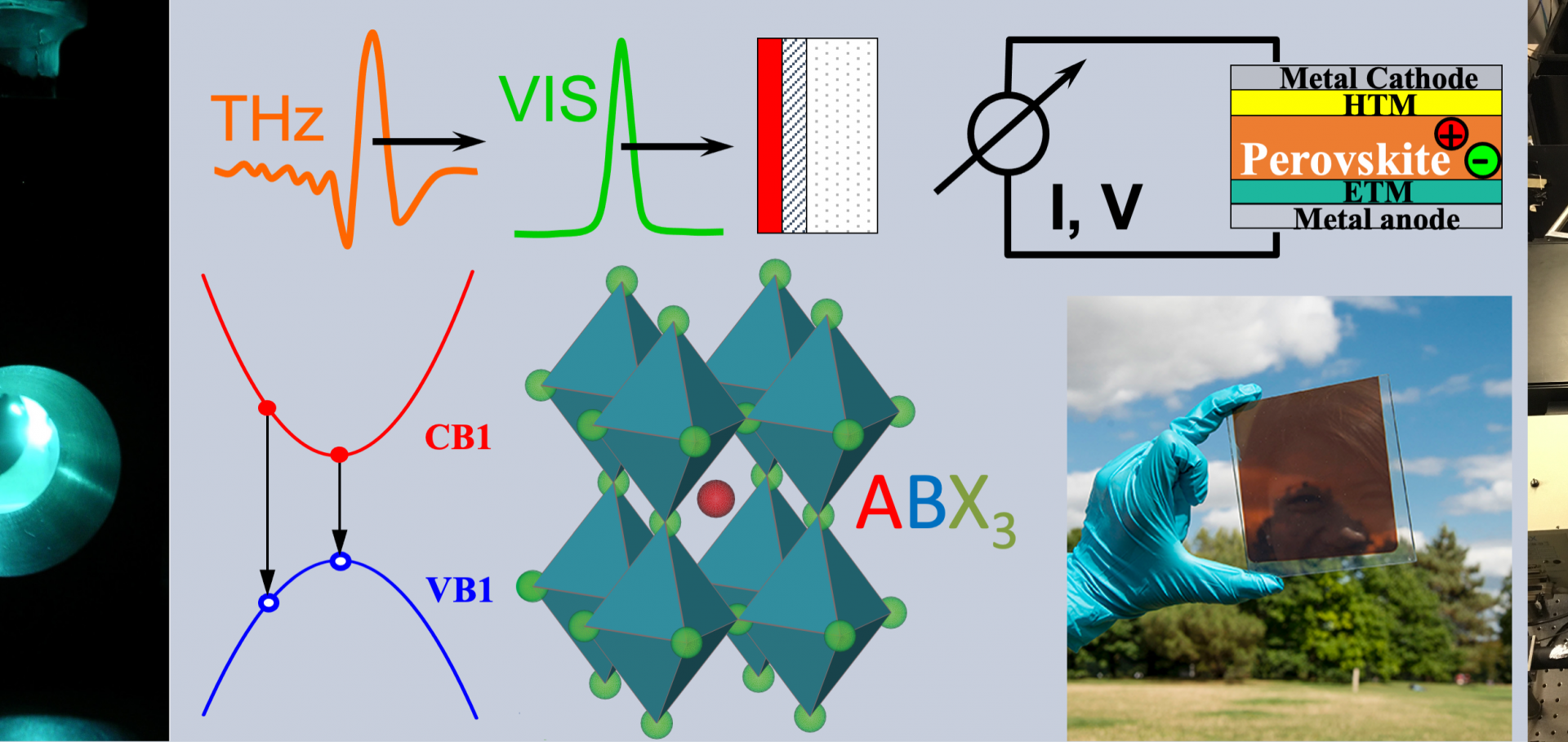A green solvent enables precursor phase engineering of stable formamidinium lead triiodide perovskite solar cells
Nature Communications Nature Research 15:1 (2024) 10110
Abstract:
Perovskite solar cells (PSCs) offer an efficient, inexpensive alternative to current photovoltaic technologies, with the potential for manufacture via high-throughput coating methods. However, challenges for commercial-scale solution-processing of metal-halide perovskites include the use of harmful solvents, the expense of maintaining controlled atmospheric conditions, and the inherent instabilities of PSCs under operation. Here, we address these challenges by introducing a high volatility, low toxicity, biorenewable solvent system to fabricate a range of 2D perovskites, which we use as highly effective precursor phases for subsequent transformation to α-formamidinium lead triiodide (α-FAPbI3), fully processed under ambient conditions. PSCs utilising our α-FAPbI3 reproducibly show remarkable stability under illumination and elevated temperature (ISOS-L-2) and “damp heat” (ISOS-D-3) stressing, surpassing other state-of-the-art perovskite compositions. We determine that this enhancement is a consequence of the 2D precursor phase crystallisation route, which simultaneously avoids retention of residual low-volatility solvents (such as DMF and DMSO) and reduces the rate of degradation of FA+ in the material. Our findings highlight both the critical role of the initial crystallisation process in determining the operational stability of perovskite materials, and that neat FA+-based perovskites can be competitively stable despite the inherent metastability of the α-phase.Nanostructure and Photovoltaic Potential of Plasmonic Nanofibrous Active Layers
Small Wiley (2024) 2409269
Abstract:
Nanofibrous active layers offer hierarchical control over molecular structure, and the size and distribution of electron donor:acceptor domains, beyond conventional organic photovoltaic architectures. This structure is created by forming donor pathways via electrospinning nanofibers of semiconducting polymer, then infiltrating with an electron acceptor. Electrospinning induces chain and crystallite alignment, resulting in enhanced light‐harvesting and charge transport. Here, the charge transport capabilities are predicted, and charge separation and dynamics are evaluated in these active layers, to assess their photovoltaic potential. Through X‐ray and electron diffraction, the fiber nanostructure is elucidated, with uniaxial elongation of the electrospinning jet aligning the polymer backbones within crystallites orthogonal to the fiber axis, and amorphous chains parallel. It is revealed that this structure forms when anisotropic crystallites, pre‐assembled in solution, become oriented along the fiber– a configuration with high charge transport potential. Competitive dissociation of excitons formed in the photoactive nanofibers is recorded, with 95%+ photoluminescence quenching upon electron acceptor introduction. Transient absorption studies reveal that silver nanoparticle addition to the fibers improves charge generation and/or lifetimes. 1 ns post‐excitation, the plasmonic architecture contains 45% more polarons, per exciton formed, than the bulk heterojunction. Therefore, enhanced exciton populations may be successfully translated into additional charge carriers.Vertically oriented low-dimensional perovskites for high-efficiency wide band gap perovskite solar cells
Nature Communications Nature Research 15:1 (2024) 9069
Abstract:
Controlling crystal growth alignment in low-dimensional perovskites (LDPs) for solar cells has been a persistent challenge, especially for low-n LDPs (n < 3, n is the number of octahedral sheets) with wide band gaps (>1.7 eV) impeding charge flow. Here we overcome such transport limits by inducing vertical crystal growth through the addition of chlorine to the precursor solution. In contrast to 3D halide perovskites (APbX3), we find that Cl substitutes I in the equatorial position of the unit cell, inducing a vertical strain in the perovskite octahedra, and is critical for initiating vertical growth. Atomistic modelling demonstrates the thermodynamic stability and miscibility of Cl/I structures indicating the preferential arrangement for Cl-incorporation at I-sites. Vertical alignment persists at the solar cell level, giving rise to a record 9.4% power conversion efficiency with a 1.4 V open circuit voltage, the highest reported for a 2 eV wide band gap device. This study demonstrates an atomic-level understanding of crystal tunability in low-n LDPs and unlocks new device possibilities for smart solar facades and indoor energy generation.Overcoming Intrinsic Quantum Confinement and Ultrafast Self-Trapping in Ag–Bi–I- and Cu–Bi–I-Based 2D Double Perovskites through Electroactive Cations
Journal of the American Chemical Society American Chemical Society (ACS) 146:39 (2024) 26694-26706
Contrasting Ultra-Low Frequency Raman and Infrared Modes in Emerging Metal Halides for Photovoltaics
ACS Energy Letters American Chemical Society 9:8 (2024) 4127-4135


